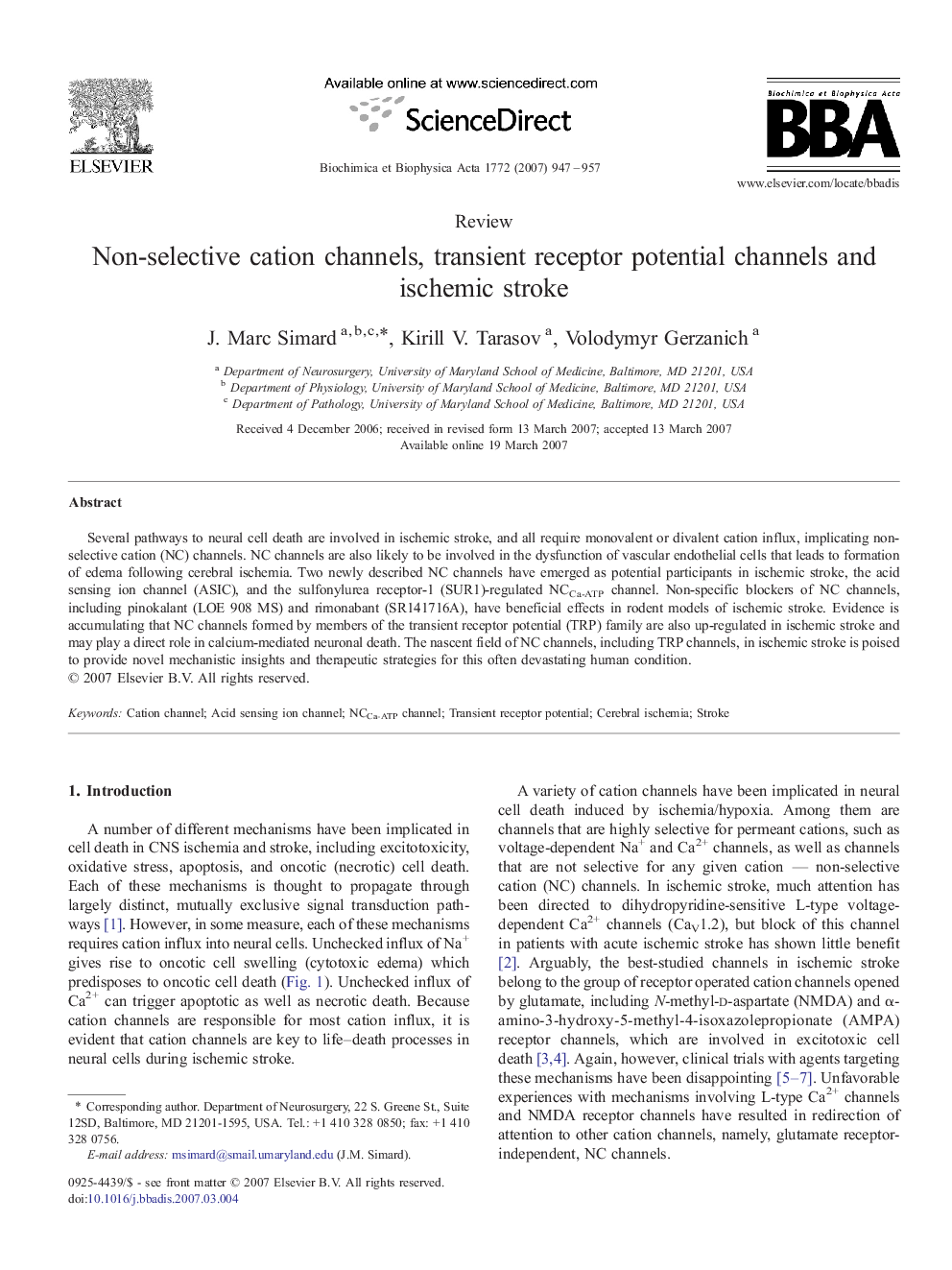| Article ID | Journal | Published Year | Pages | File Type |
|---|---|---|---|---|
| 1905790 | Biochimica et Biophysica Acta (BBA) - Molecular Basis of Disease | 2007 | 11 Pages |
Several pathways to neural cell death are involved in ischemic stroke, and all require monovalent or divalent cation influx, implicating non-selective cation (NC) channels. NC channels are also likely to be involved in the dysfunction of vascular endothelial cells that leads to formation of edema following cerebral ischemia. Two newly described NC channels have emerged as potential participants in ischemic stroke, the acid sensing ion channel (ASIC), and the sulfonylurea receptor-1 (SUR1)-regulated NCCa-ATP channel. Non-specific blockers of NC channels, including pinokalant (LOE 908 MS) and rimonabant (SR141716A), have beneficial effects in rodent models of ischemic stroke. Evidence is accumulating that NC channels formed by members of the transient receptor potential (TRP) family are also up-regulated in ischemic stroke and may play a direct role in calcium-mediated neuronal death. The nascent field of NC channels, including TRP channels, in ischemic stroke is poised to provide novel mechanistic insights and therapeutic strategies for this often devastating human condition.
